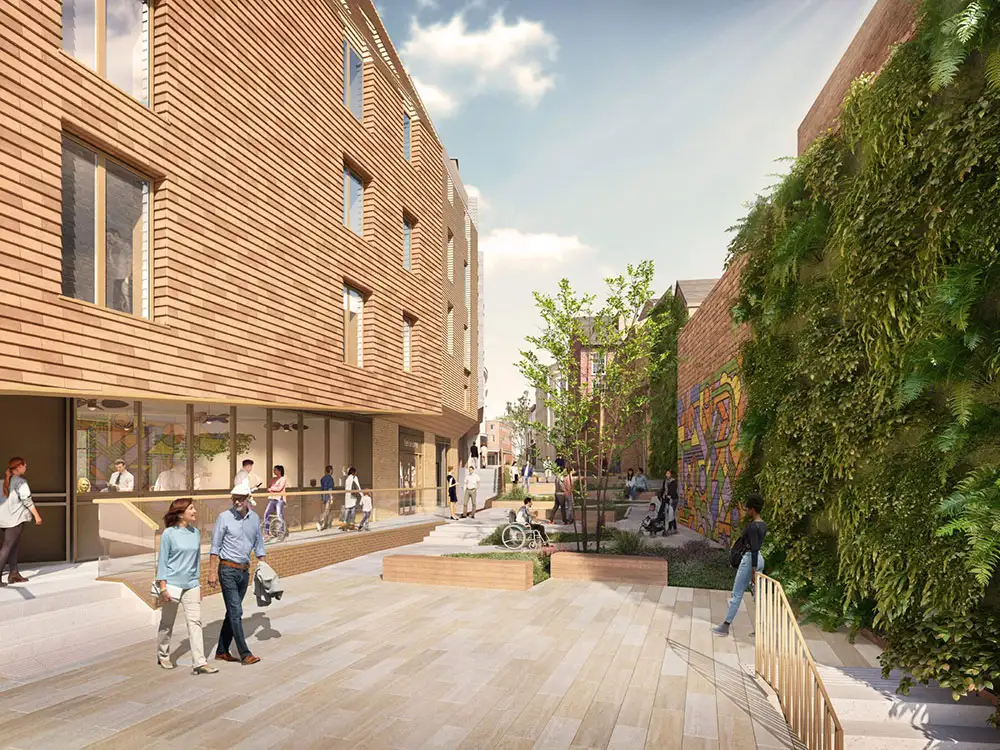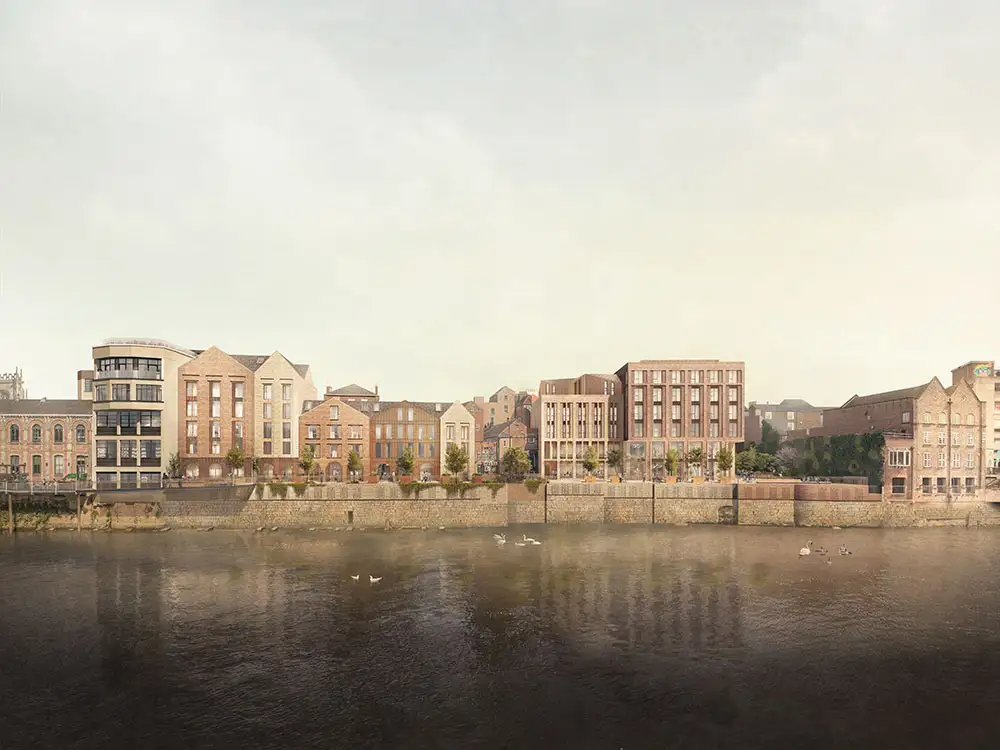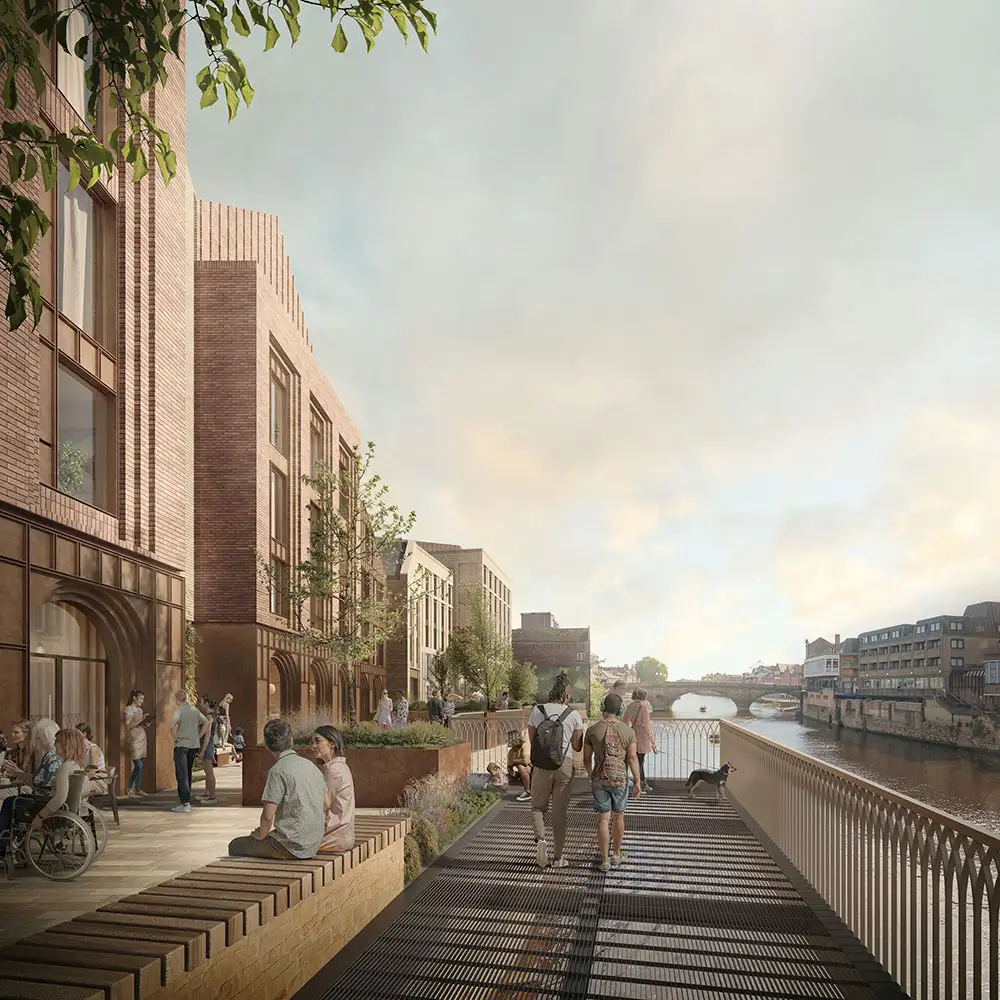Work on a new waterfront development featuring shops, leisure businesses and student accommodation in York is set to begin in early 2026 after plans were approved.
Max Reeves, development director for Hemsley Group, said there was more work to do on their Coney Street Riverside development before building could begin following its approval by councillors.
Mr Reeves said the site’s location came with challenges including managing students moving in and out of 358 rooms at the development.
He welcomed the decision by City of York Council’s planning committee last night to approve the development which was hailed as long overdue.
Plans approved by councillors are set to see the building currently occupied by Boots and the back of WH Smith demolished.
The building at 29-31 Coney Street is also set to be torn down along with extensions behind numbers 21, 23, 25 and 33.
The space left by Boots is set to be turned into a new public walkway named Waterloo Place which will link Coney Street to the waterfront of the River Ouse.

The waterfront area is set to feature retail and leisure businesses on the ground floor on new buildings between three and six storeys tall.
Student accommodation is set to be created in the upper floors of the new buildings and in those of numbers 21, 23, 25 and 33 and 19 which houses Next.
Historic shop fronts in Coney Street are also set to be restored.
Councillors heard the plans would realise ambitions held for 50 years to reconnect Coney Street to the River Ouse.
Mr Reeves said Helmsley would draw on its track record of successfully redeveloping historic buildings to create a development that would shape York’s future.
Traffic concerns
York BID executive director Andrew Lowson said it followed years of engagement with the local business community and aimed to help Coney Street adapt to changing consumer trends.
Disability rights activist Flick Williams said the work the developer had done on access in the develop should set a benchmark for future schemes.
But some on the committee said they were concerned about how the dropping off and departure of students at the start of the academic year would be managed.
Committee member Cllr Nigel Ayre said traffic restrictions on Coney Street meant there would effectively be a two-hour window for students to move, posing significant logistical issues.
The Liberal Democrat added the decision to go with student accommodation rather than affordable housing marked further moves away from providing residential homes in the city centre.
Labour’s Cllr Conrad Whitcroft and Conservative Cllr Chris Steward said the riverside location of the public area behind Coney Street posed safety concerns but they otherwise welcomed the development.
Councillors backed a requirement for the developer to be responsible for replacing any trees planted in the waterfront area.

Committee chair Cllr Jonny Crawshaw said the scheme would see historic buildings revitalised and the student accommodation would be a better fit given the development’s city centre location.
Speaking after the meeting, Mr Reeves said Helmsley would work with the council to manage any difficulties caused by students moving in and out and on other issues.
The development manager said: “This is a wonderful opportunity to sensitively and sustainably redevelop historic Coney Street into the social heart of York and reconnect it with its riverfront.
“We now look forward to moving forward with this once-in-a-lifetime opportunity to deliver this truly mixed-use, vibrant development.”
Further plans for 3-7 Coney Street which also form part of the development are set go before councillors in November.
They would see new retail and restaurant space created along with seven one and two-bedroom apartments in the upper floors of numbers 3-7.
